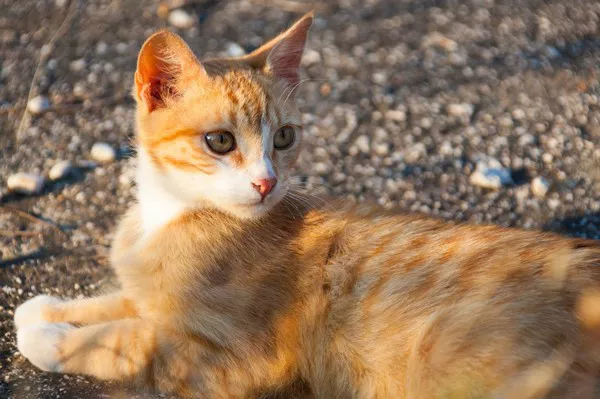Cats are often cherished members of our families, providing companionship, comfort, and joy. However, pet ownership comes with responsibilities, including the need to monitor and maintain the health of our furry friends. One common concern among cat owners is the potential for their pets to harbor intestinal parasites, such as worms. This raises an important question: Is it safe to sleep with a cat that has worms? This essay explores the types of worms that can affect cats, their transmission methods, the risks associated with sleeping with an infected cat, symptoms of infection, preventive measures, and the overall implications for cat owners. By understanding these factors, we can make informed decisions about our health and the well-being of our pets.
Understanding Worms in Cats
Worms are a type of intestinal parasite that can infect cats, leading to various health issues. The most common types of worms that affect cats include roundworms, tapeworms, hookworms, and whipworms. Each type of worm has its own life cycle, transmission methods, and health implications.
Types of Worms
Roundworms (Toxocara cati)
Roundworms are one of the most common intestinal parasites in cats. They are long, spaghetti-like worms that can grow up to several inches in length. Cats can become infected with roundworms through:
Ingestion of Eggs: Roundworm eggs are shed in the feces of infected cats and can contaminate the environment. Cats can ingest these eggs from contaminated soil, water, or by grooming themselves after coming into contact with infected surfaces.
Mother to Kitten Transmission: Kittens can acquire roundworms from their mother through the placenta or milk.
Tapeworms (Dipylidium caninum)
Tapeworms are flat, segmented worms that can infect cats primarily through fleas. The transmission process involves:
Flea Transmission: When a cat grooms itself and ingests an infected flea, the tapeworm cysts are released into the cat’s intestines, where they mature into adult tapeworms.
Excretion of Segments: Adult tapeworms attach to the intestinal wall and produce segments that are excreted in the cat’s feces, which can be seen as small, rice-like pieces.
Hookworms (Ancylostoma spp.)
Hookworms are less common in cats than in dogs but can still pose a health risk. They can be transmitted through:
Contaminated Soil: Cats can become infected by ingesting hookworm larvae from contaminated soil or through skin contact.
Whipworms (Trichuris spp.)
Whipworms are primarily a concern for dogs but can occasionally infect cats. They are transmitted through the ingestion of contaminated soil or feces.
Transmission Mechanisms: How Worms Spread
Understanding how worms are transmitted is essential for assessing the risks of sleeping with a cat that has worms. The transmission routes vary depending on the type of worm involved.
Roundworms
Ingestion of Eggs: Roundworm eggs are shed in the feces of infected cats and can contaminate the environment. Humans can accidentally ingest these eggs through contaminated soil, food, or surfaces.
Mother to Kitten Transmission: Kittens can acquire roundworms from their mother, but this does not directly affect humans unless the eggs are shed in feces.
Tapeworms
Flea Transmission: Tapeworms are primarily transmitted through fleas. If a person accidentally ingests an infected flea (often through contaminated hands or surfaces), they can become infected.
Direct Contact: While it is less common, there is a potential risk of transmission through direct contact with infected feces.
Hookworms
Ingestion of Larvae: Humans can become infected by ingesting hookworm larvae from contaminated soil or through skin contact, particularly if they walk barefoot in infected areas.
Risks of Sleeping with a Cat That Has Worms
The primary concern for cat owners is whether sleeping with a cat that has worms poses a risk to human health. The risk of transmission depends on several factors, including the type of worm, the cat’s health, and hygiene practices.
Direct Transmission Risks
Roundworms: While direct transmission from sleeping with a cat is unlikely, it is possible to contract roundworms if the cat has not been treated and sheds eggs in the environment. If a person comes into contact with contaminated surfaces or feces, they may inadvertently ingest eggs.
Tapeworms: The risk of contracting tapeworms from a cat is primarily associated with fleas. If a cat has fleas and a person accidentally ingests an infected flea (often through contaminated hands), they can become infected.
Hookworms: Hookworms can be transmitted through contaminated soil, so the risk of transmission from sleeping with a cat is low unless there is direct contact with infected feces or larvae.
Indirect Transmission Risks
Environmental Contamination: If a cat is infected with worms and sheds eggs in the home, these eggs can contaminate surfaces, carpets, or bedding. Without proper hygiene, there is a risk of transmission to humans.
Hygiene Practices: Maintaining good hygiene practices, such as regular cleaning of litter boxes and washing hands after handling the cat, can significantly reduce the risk of transmission.
Symptoms of Worm Infections
Recognizing the symptoms of worm infections is crucial for early diagnosis and treatment. Symptoms can vary depending on the type of worm involved.
Symptoms of Roundworm Infection
Abdominal Pain: Individuals may experience stomach discomfort or pain.
Diarrhea: Infected individuals may have diarrhea or loose stools.
Weight Loss: Unexplained weight loss can occur due to nutrient absorption issues.
Fatigue: General fatigue and weakness may be present.
Symptoms of Tapeworm Infection
Abdominal Discomfort: Mild abdominal pain may occur.
Visible Segments: Segments of the tapeworm may be visible in the feces or around the anus.
Weight Loss: Similar to roundworm infections, weight loss can occur.
Symptoms of Hookworm Infection
Anemia: Hookworms can cause anemia due to blood loss.
Fatigue and Weakness: Infected individuals may feel fatigued and weak.
Gastrointestinal Issues: Symptoms may include diarrhea and abdominal pain.
Preventive Measures: Reducing the Risk of Worm Transmission
While the risk of contracting worms from sleeping with cats exists, there are several preventive measures that cat owners can take to minimize these risks.
Regular Veterinary Care
Regular veterinary check-ups are essential for maintaining a cat’s health and preventing worm infestations. Veterinarians can recommend appropriate vaccinations, deworming schedules, and flea prevention measures.
Good Hygiene Practices
Litter Box Maintenance: Regularly clean the litter box to minimize exposure to fecal matter. Using gloves while cleaning and washing hands thoroughly afterward can reduce the risk of infection.
Handwashing: Always wash hands after handling cats, cleaning litter boxes, or coming into contact with potentially contaminated surfaces.
Food Safety: Ensure that food is prepared and stored safely to avoid contamination with parasite eggs or oocysts.
Flea and Tick Prevention
Implementing effective flea and tick prevention measures is crucial for reducing the risk of external parasites. This can include:
Topical Treatments: Use veterinarian-recommended topical treatments or oral medications to prevent flea infestations.
Environmental Control: Regularly vacuum and clean living areas to eliminate fleas and ticks from the environment.
Regular Grooming: Regularly groom your cat to check for fleas and ticks and to minimize the risk of infestations.
The Role of Lifestyle in Worm Risk
The lifestyle of a cat owner can influence the risk of worm transmission. Understanding these factors can help mitigate risks.
Indoor vs. Outdoor Cats
Indoor Cats: Cats that live exclusively indoors are less likely to be exposed to worms, as they have limited contact with the outside environment. However, they can still be at risk if they come into contact with contaminated surfaces or other pets.
Outdoor Cats: Cats that roam outdoors are at a higher risk of encountering worms. They may come into contact with infected animals, contaminated soil, or environments that harbor parasites.
Shared Sleeping Spaces
Sleeping with a cat can increase the risk of worm transmission, particularly if the cat is not regularly treated for worms. If a cat has worms, these parasites can easily transfer to the owner’s bedding or clothing.
Family Dynamics
Families with children or immunocompromised individuals should be particularly cautious about the risks associated with sleeping with cats. Children may be more susceptible to infections, and individuals with weakened immune systems may experience more severe symptoms from worm infections.
Conclusion
In conclusion, while sleeping with a cat that has worms can pose some risk of transmission, the likelihood of contracting worms is relatively low with proper preventive measures. Understanding the types of worms associated with cats, their transmission mechanisms, and symptoms of infection is crucial for cat owners. By maintaining good hygiene practices, ensuring regular veterinary care, and implementing effective flea and tick prevention strategies, individuals can enjoy the companionship of their feline friends while minimizing health risks. Ultimately, the joy and benefits of living with cats often outweigh the potential risks, provided that owners are informed and proactive in managing their pets’ health.
Related topic:



























